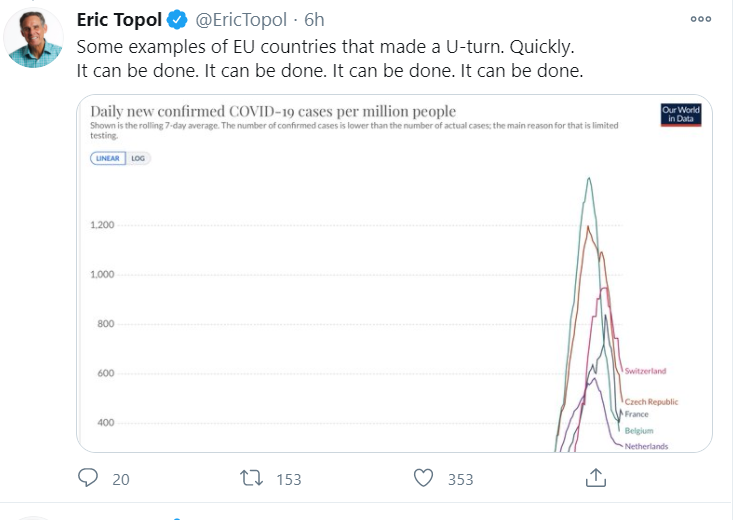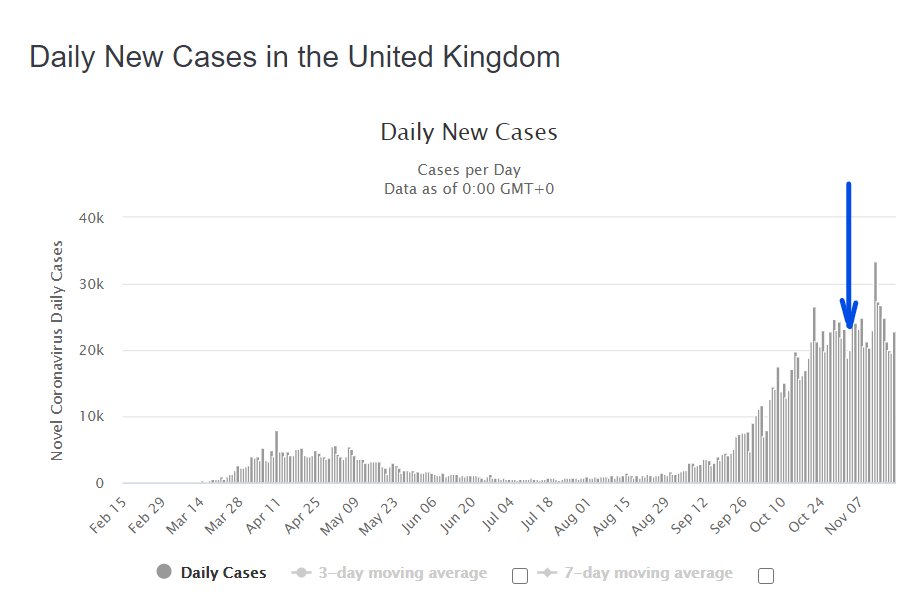
COVID hospitalizations are breaking records, yet overall utilization seems relatively unchanged and mostly normal for this time of the year. How can this be?
How can hospitals both be overwhelmed but also have about the same number of beds available as a month ago? (1/x)
How can hospitals both be overwhelmed but also have about the same number of beds available as a month ago? (1/x)
https://twitter.com/Rick82Ramirez/status/1334713036561498112
Let's say we randomly select a group of people from the population every day, and have them spend the night in a hospital. Of course they are not random, but that is not the point.
When there is more spread, more of the people who are selected each day will have it. (2/x)
When there is more spread, more of the people who are selected each day will have it. (2/x)
Let's look at NC numbers. The situation is similar in many places.
COVID hospitalizations increased by about a thousand in the past month, but overall utilization is the same. How is this happening?
It is all about COVID unit capacity. (3/x)

COVID hospitalizations increased by about a thousand in the past month, but overall utilization is the same. How is this happening?
It is all about COVID unit capacity. (3/x)


Because of isolation requirements, hospitals have separate units for patients with COVID. Regardless of what they are admitted for, positive patients stay there.
The problem is, when it is the virus season, more people will have it. (4/x)
The problem is, when it is the virus season, more people will have it. (4/x)
https://twitter.com/covidtweets/status/1334544009134551040?s=20
As a result, these units are quickly filling up with patients admitted for all kinds of issues when the virus is widespread. Because staff need PPE in these units, more PPE is being used.
Hence hospitals are getting stretched and are having to open new COVID units. (5/x)
Hence hospitals are getting stretched and are having to open new COVID units. (5/x)
I suspect this is at least in part the reason why the CDC shortened the isolation requirement for COVID patients. New rules should allow hospitals to move patients out of COVID units after 7 days if they have no COVID symptoms. (6/x)
forbes.com/sites/williamh…
forbes.com/sites/williamh…
Are there people hospitalized "for" COVID also? Of course there are. The virus makes some people very sick.
But that percentage is not big enough to shoot the hospitalized numbers from 40K to over 100K in a month. (7/7)
But that percentage is not big enough to shoot the hospitalized numbers from 40K to over 100K in a month. (7/7)
Evidence to the second tweet above:
https://twitter.com/AlanaKinrich/status/1334730797241126914?s=19
• • •
Missing some Tweet in this thread? You can try to
force a refresh












